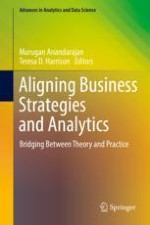2019 | OriginalPaper | Chapter
10. Delivering Internal Business Intelligence Services: How Different Strategies Allow Companies to Succeed by Failing Fast
Author : Rubén A. Mendoza
Published in: Aligning Business Strategies and Analytics
Publisher: Springer International Publishing
Activate our intelligent search to find suitable subject content or patents.
Select sections of text to find matching patents with Artificial Intelligence. powered by
Select sections of text to find additional relevant content using AI-assisted search. powered by
